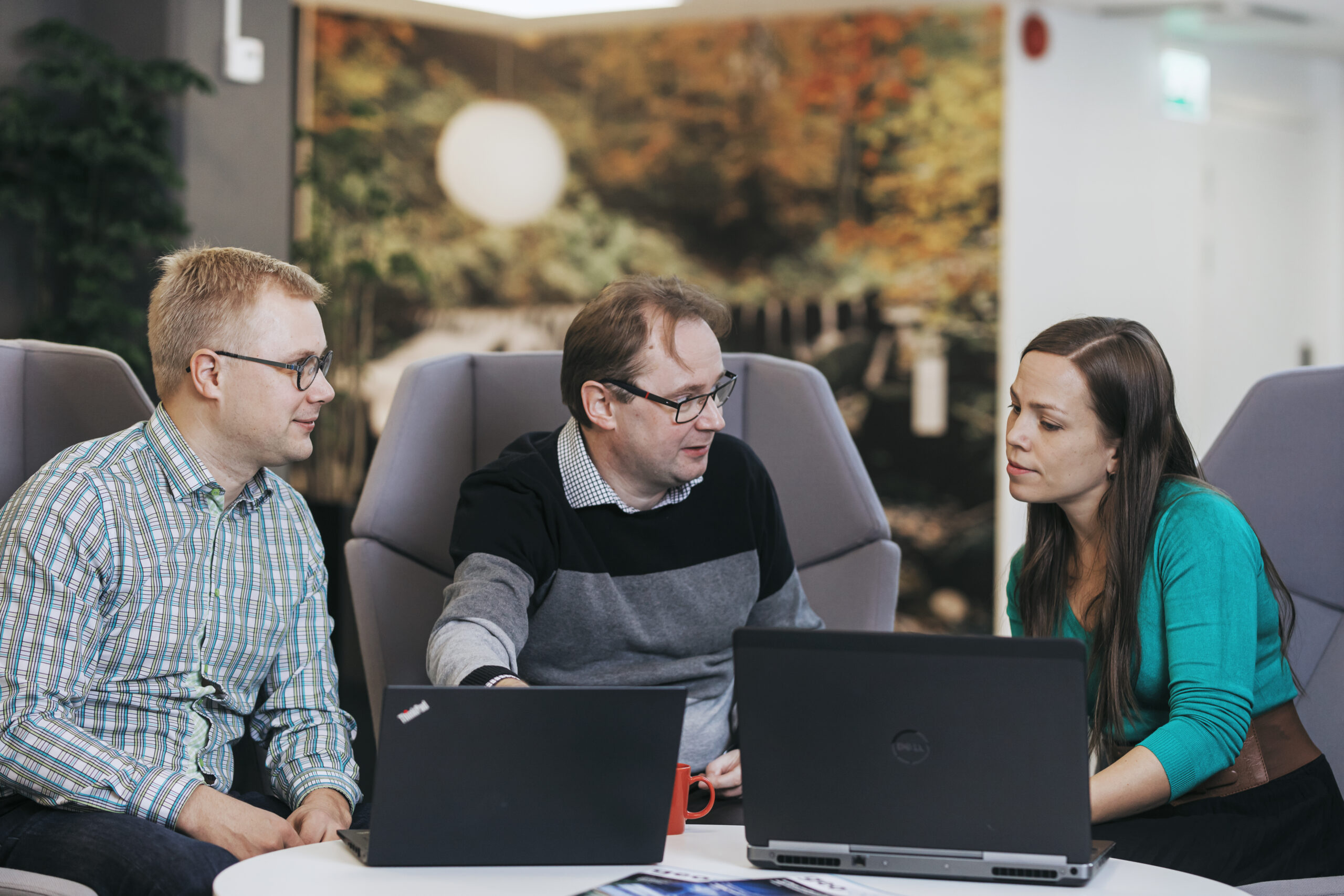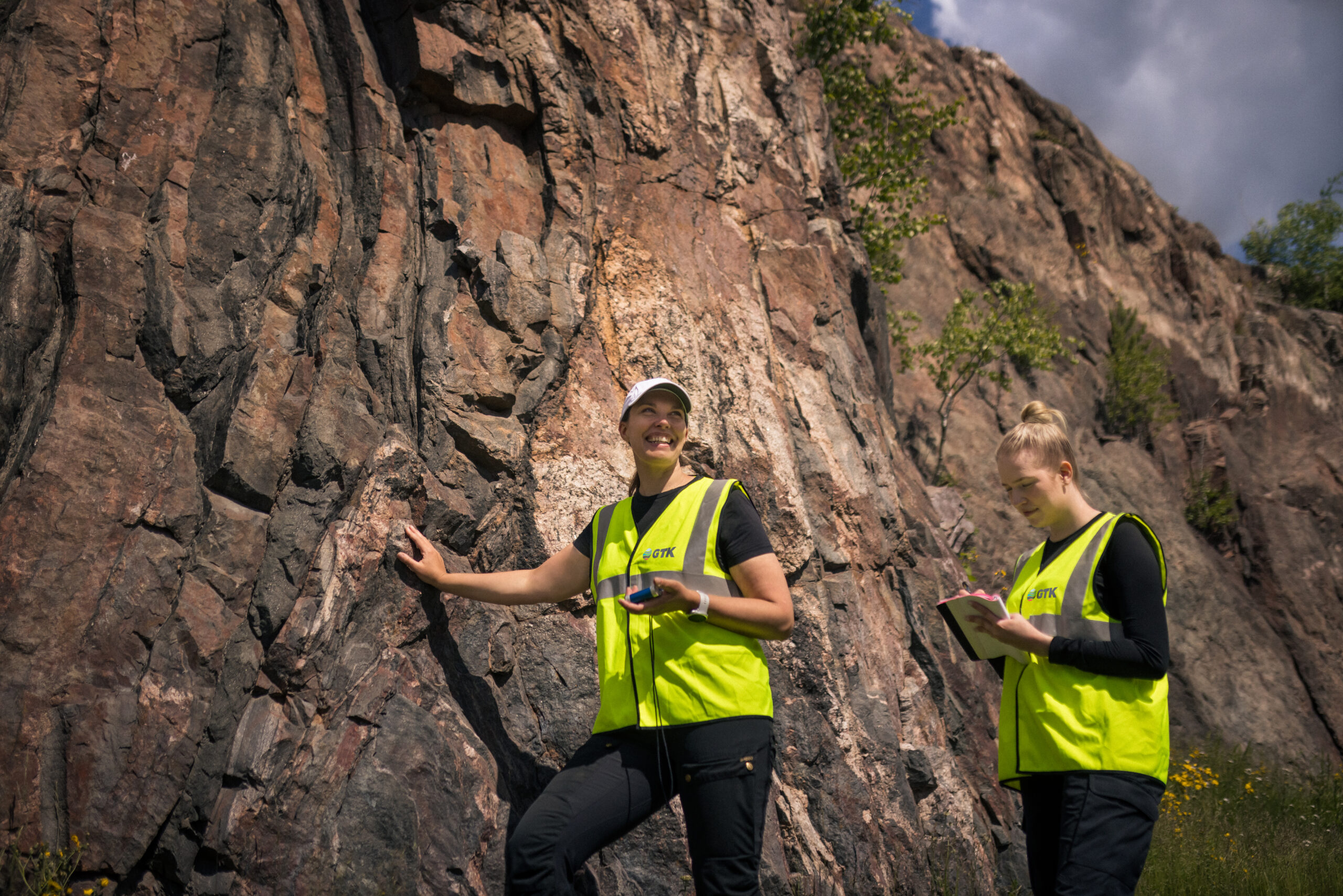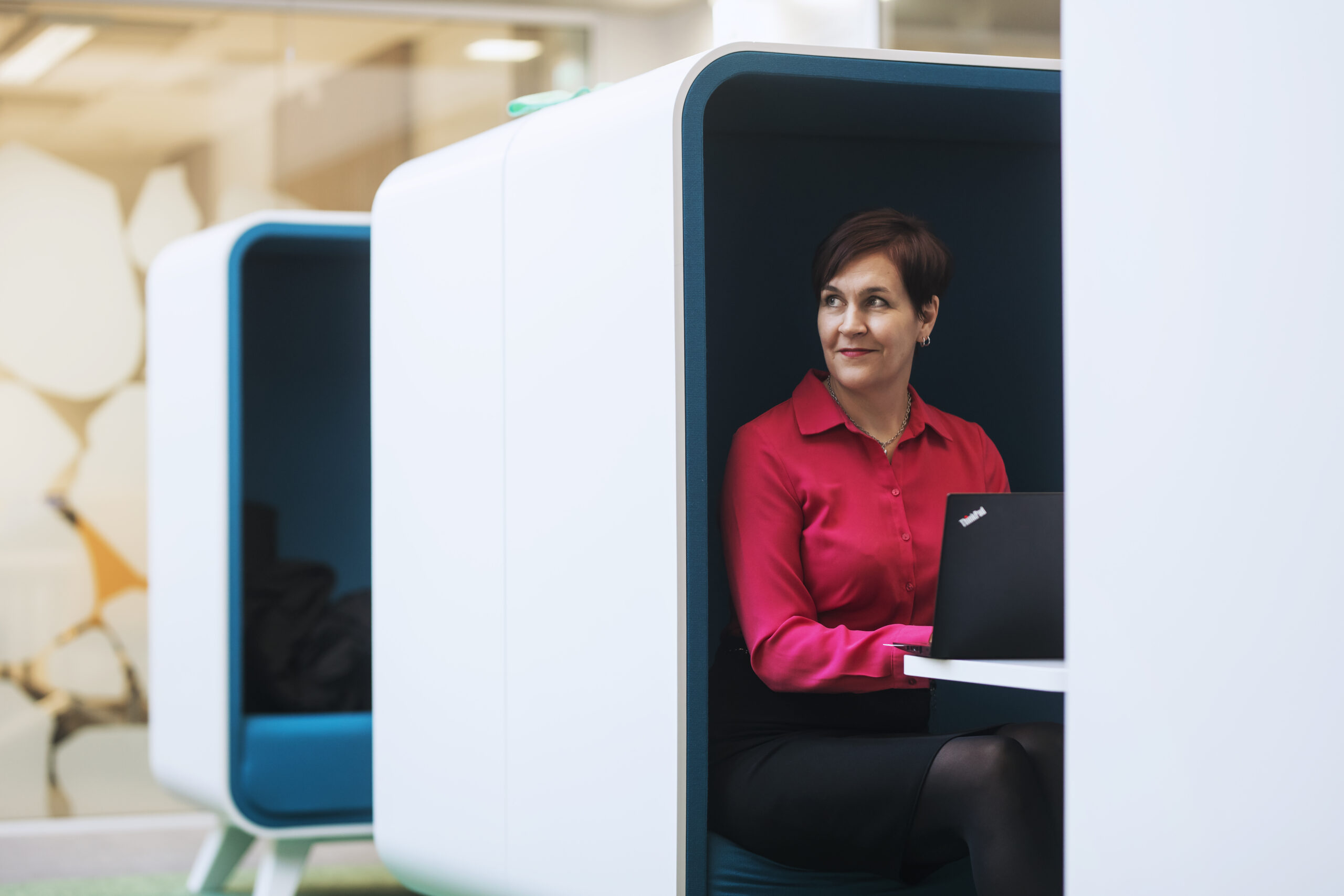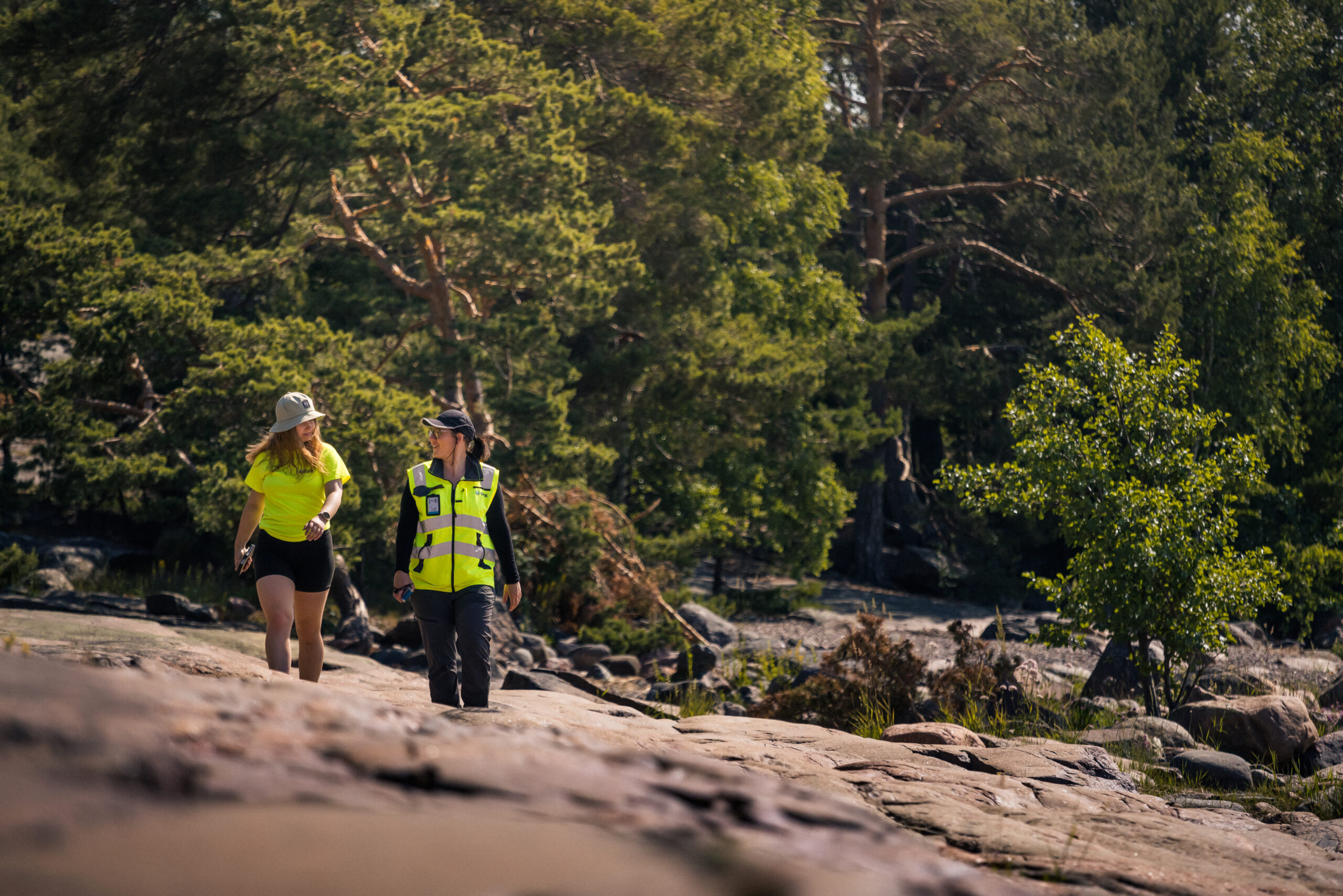GTK 2.0 change programme was a success – investments in culture, supervisory work and communication in the working community to continue
Two years ago, the Geological Survey of Finland (GTK) started to invest systematically in the development of modern work. The development project, named the “GTK 2.0 – Future Location Independent Work” change programme, was completed at the end of February. Its results will continue to be reflected in daily activities at GTK, and GTK will continue to develop working methods as one of pioneers in the central government.

At the beginning of 2020, it was obvious that the pandemic would revolutionise working life: remote work will be a significant part of daily activities, cooperation through technology will increase, and in-person meetings will find new meanings. Multi-locational work became a hot topic in working life. At GTK, work was already multi-locational before the pandemic, especially because of fieldwork, but the rapid changes also challenged the research organisation’s activities. New ways had to be sought urgently for cooperation to carry out work under the exceptional circumstances. Soon the following question was asked: how can GTK get the most out of this situation?
This led to action. In January 2021, GTK launched a development project for working methods, an exceptionally large one in a central government organisation: the “GTK 2.0 – Future Location-Independent Work” change programme. Making work smoother for GTK people’s in the new situation and piloting new methods of internal cooperation and communication in the central government were set as the programme’s goals. A group of specialists in public administration, working life and technologies partnered with the programme: The Government ICT Centre Valtori, the Ministry of Finance, Senate Properties, Fujitsu Finland, CSC – IT Center for Science, and Elisa.
“The idea of this kind of work was so distant from normal at GTK that starting the programme was not that simple. The stakes were also raised during the first stages of the pandemic. Back then, we started to understand just how significant an opportunity this could be for us,” says Samu Valpola, Director of the Finance and Management System, who was in charge of the project.

The first year led to a change in the mindset
The content and focus of the GTK 2.0 change programme were defined by GTK people. The results of workshops and surveys showed that key factors in the new situation ravaged by the pandemic were supporting and promoting wellbeing and the sense of community, improving ways of leadership and working, and developing working environments to respond to various needs. As a result, the project was divided into four focus areas: genuine multi-locationality, modern technologies and information systems, competence and HR, and implementation, support and communication. The project was kicked off using the Scrum project management method.
2021 was characterised by experiments and trials. For example, GTK conceptualised new facility and workstation models, deployed the tools offered by the M365 environment, tested new types of competence development, and sought ways to build the sense of community in multi-locational work. When the coronavirus restrictions were temporarily lifted in November, GTK celebrated the beginning of the new normal instead of a “return to the office”.
The systematic development of working methods could be seen in the daily activities of GTK people from the very beginning. At the end of 2021, significant results had already been achieved.
“The most significant impact of the piloting year could be seen in our mindsets,” says Valpola.
“We saw that we could adopt new ways of working instead of waiting for a return to what was. We expanded the use of technologies as a means of cooperation, communication and work management. At the end of the piloting year, we were ready to set our sights on practices and operating methods – our culture.”
From the very beginning, the GTK 2.0 project also raised interest outside the research organisation. The project was demonstrated at various stakeholder events, and best practices were shared frequently between government organisations. Changes in work and the needs to develop working methods were reflected in the central government as a whole, and other organisations also conducted GTK 2.0 trials.

2022: focus on leadership and GTK as a working community
The successful piloting year resulted in a significant decision made by GTK’s management group at the end of 2021: the GTK 2.0 project would be continued for another year. Based on the piloting year’s results, strengthening the culture, supporting supervisory work, and developing communication in the working community were selected as new focus areas. In addition, the project continued to focus on ensuring genuine multi-locationality and developing modern technological solutions.
“We extended the project thinking that we would build a working culture to ensure that GTK people enjoy their work, and our strategy can be implemented in the best possible manner. At the same time, we would ensure that we are an attractive employer for both national and international professionals,” says Valpola.
Progress was fast. GTK provided facilitated discussion and coaching sessions for supervisors, introduced thematic culture weeks divided into periods of eight months, developed English communication in the working community, and offered facilitation training. The data management skills and methods of GTK people were improved, and induction processes were streamlined. Furthermore, GTK people defined good practices for availability, communication and cooperation.
Putting GTK’s culture into words was one of the most concrete and significant steps forward. Through workshops, expert statements and coaching, GTK people defined the operating methods that should be increased or decreased in daily activities. All this resulted in the GTK Culture Map, a guide to what it means to be part of GTK, which was released at the GTK’s GEOverse strategy event on 15 February. The public version of the map will be released shortly.
“What was essential about the development of the culture was that it was not carried out for the culture itself, but for people and their work. Everything was always based on the question of how we could progress in our work better and more sustainably,” says Valpola.

GTK 2.0 came to an end – work continues
The GTK 2.0 change programme was completed at the end of February 2023. At GTK, the development of the culture, supervisory work, communication in the working community, work environments and technologies will continue as part of regular daily activities and job descriptions. GTK has shifted from the new normal to normal.
Metrics show that the change programme has had a significant impact on the daily activities of GTK people. Satisfaction with each employee’s own work, supervisory work and leadership, as well as fairness in the working community, has increased. GTK people feel that they can have an impact on their work and improve themselves as specialists. Work is carried out truly in multiple locations which offers more flexibility in coordinating work and leisure.
In addition to the internal impact, GTK’s investments in smoother work and coping and wellbeing at work can also be seen from the outside. The GTK 2.0 change programme shows itself as a significant recruitment factor by making GTK more attractive. In addition to government organisations, the change programme’s results will be used in the geological survey organisations of other countries.
“GTK 2.0 was an exceptional programme during exceptional times. It clearly showed that the central government could also take steps forward and adopt a new way of thinking if it set its mind to it. At the same time, it concretised that if we wanted to adopt a modern and sustainable way of working, we needed investments and resources,” Valpola says. He continues:
“We need to invest separately in changes and the future.”
Would you like to work for Earth and For Us in one of the best geosurvey organisations in the world? Check our vacancies here.
Careers at GTK